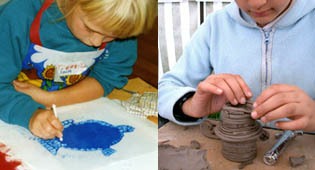











growing concerns
Who else thinks like this?
Jerome Bruner -
A regular visitor to the Reggio Emilia schools in the 1960’s, Bruner describes the value of developing imagination -
"Cultivating imagination is the first thing, but it isn’t enough to read fairytales. It is imagination that saves us from the obvious and the banal, from the ordinary aspects of life. Imagination transforms facts into conjecture.
Even a shadow cast onto the floor is not only a shadow: it is a mystery. Try drawing one, and you will realise.
One day, in a Reggio municipal nursery school, I was observing some 4 year old children and a teacher who were projecting shadows and making efforts to draw them. The concentration was absolute, but even more surprising was the freedom of exchange in expressing their imaginative ideas about what was making the shadows so odd, why they got smaller and swelled up or, as one child asked: 'How does a shadow get to be upside down?' The teacher behaved as respectfully as if she had been dealing with Nobel Prize winners. Everyone was thinking out loud. 'What do you mean upside down?' asked another child.
Here we were not dealing with individual imaginations working separately. We were collectively involved in what is probably the most human thing about human beings, what psychologists and primate experts now like to call ‘intersubjectivity’, which means arriving at a mutual understanding of what others have in mind.
It is probably the extreme flowering of our evolution as humanoids, without which our human culture could not have developed, and without which all our intentional attempts at teaching something would fail."
resource link > The Hundred Languages of Children
what do we mean -
• there is special knowledge and understanding to be gained by making things
• childhood plays a vital part in this innovative process
a historical perspective
• observation, trial and error
• origins of maths
• patterns and geometry
facing the future
growing concerns
• Neil MacGregor
• Sherry Turkle
• Seymour Papert